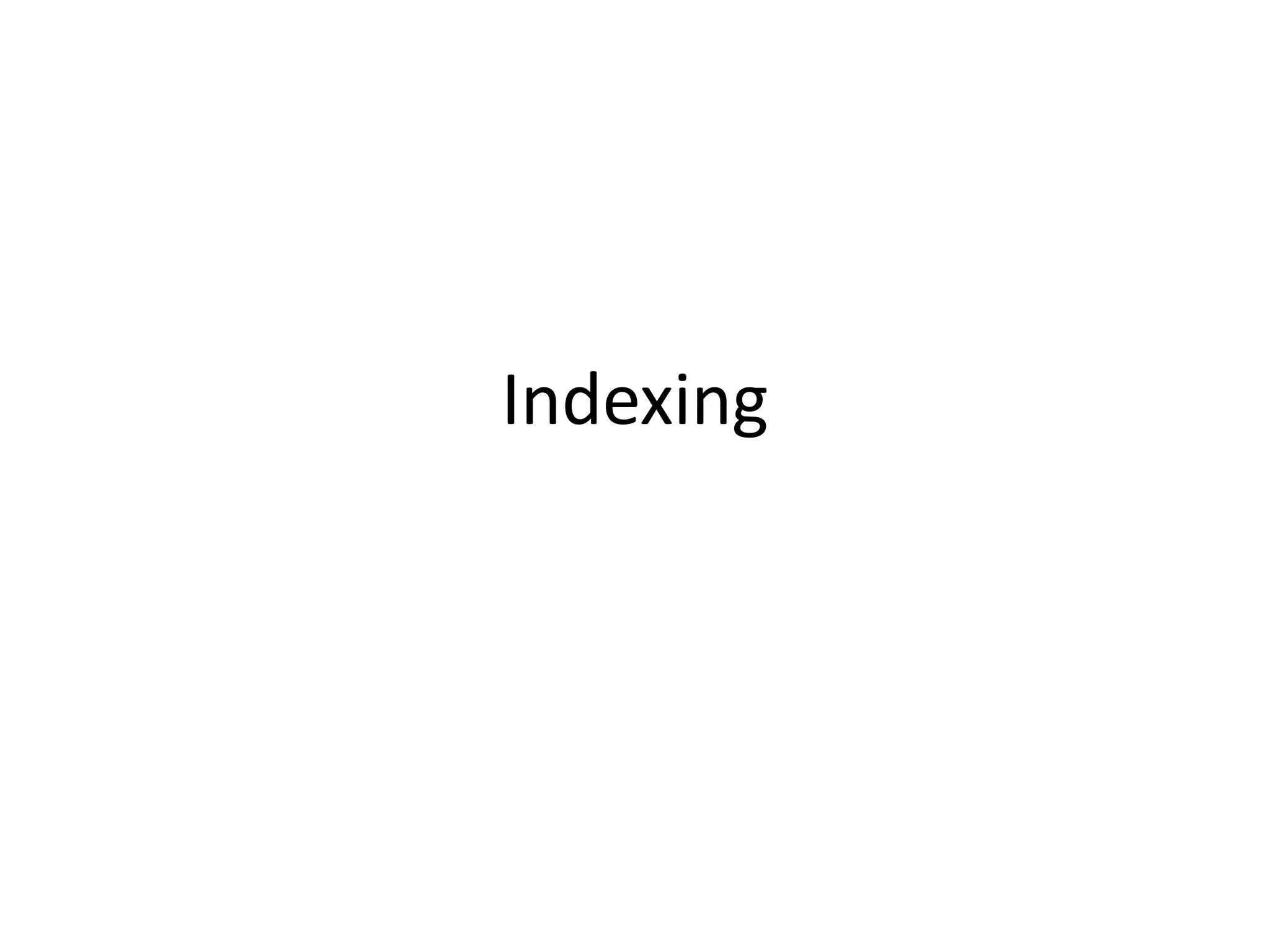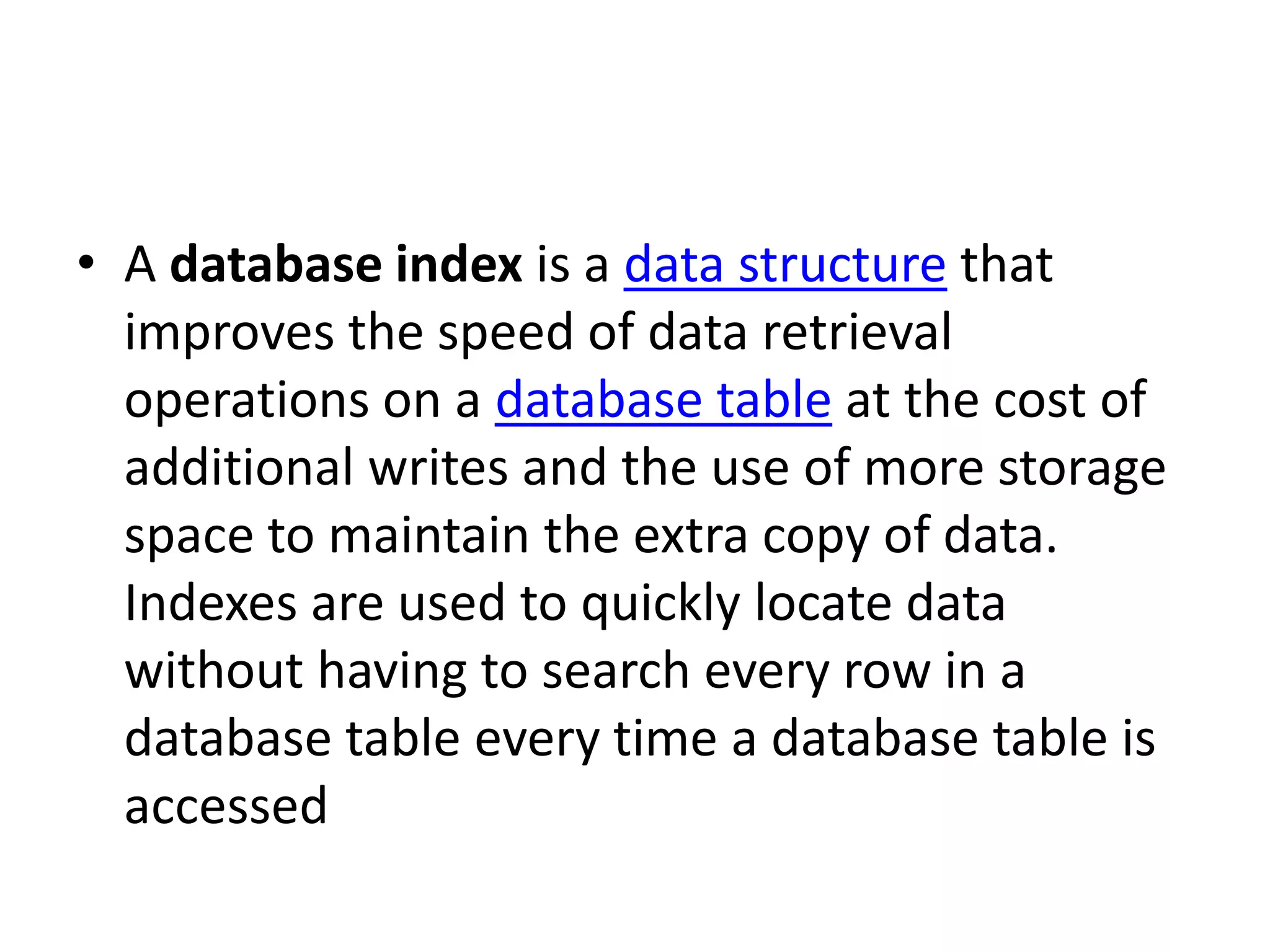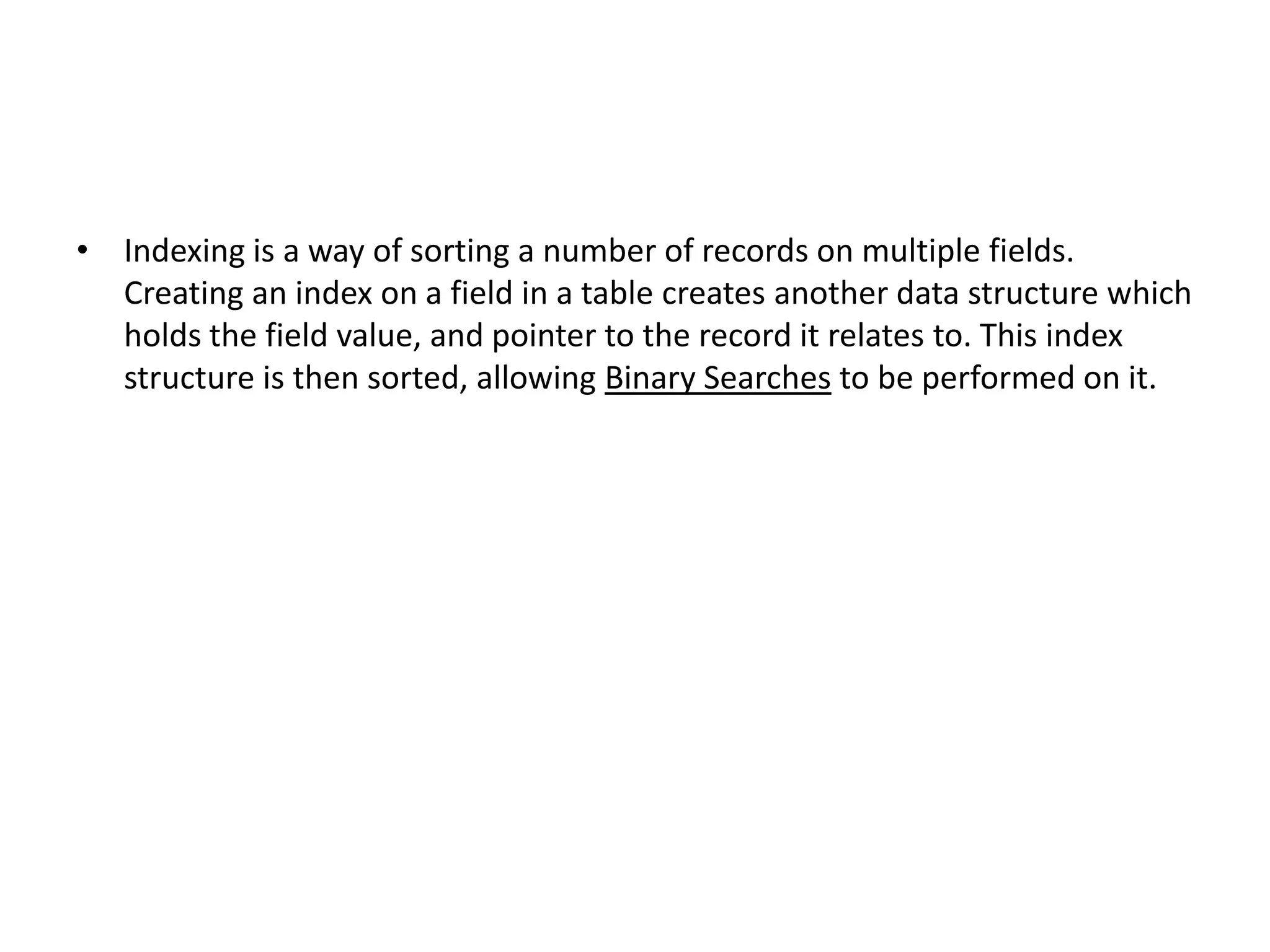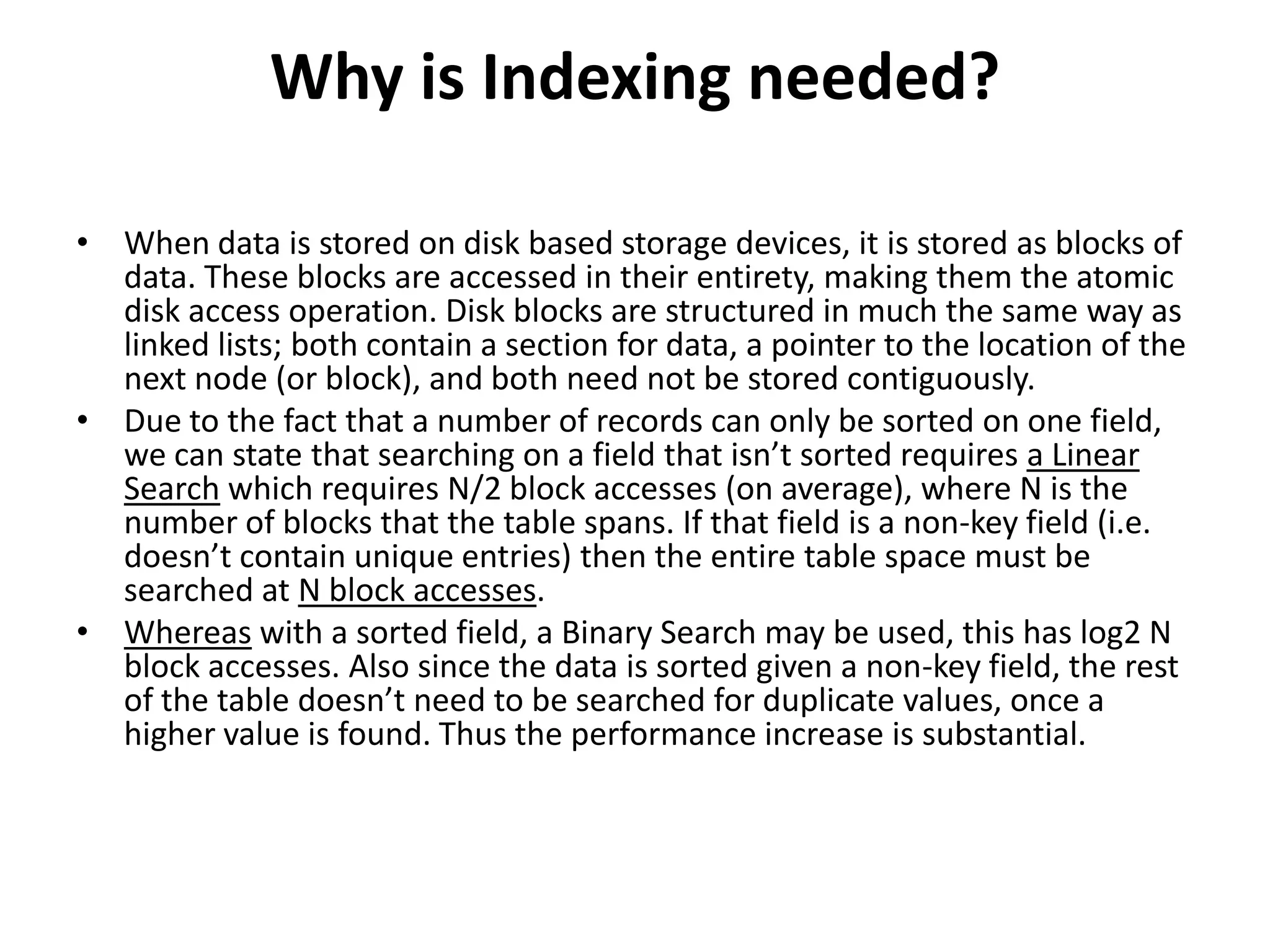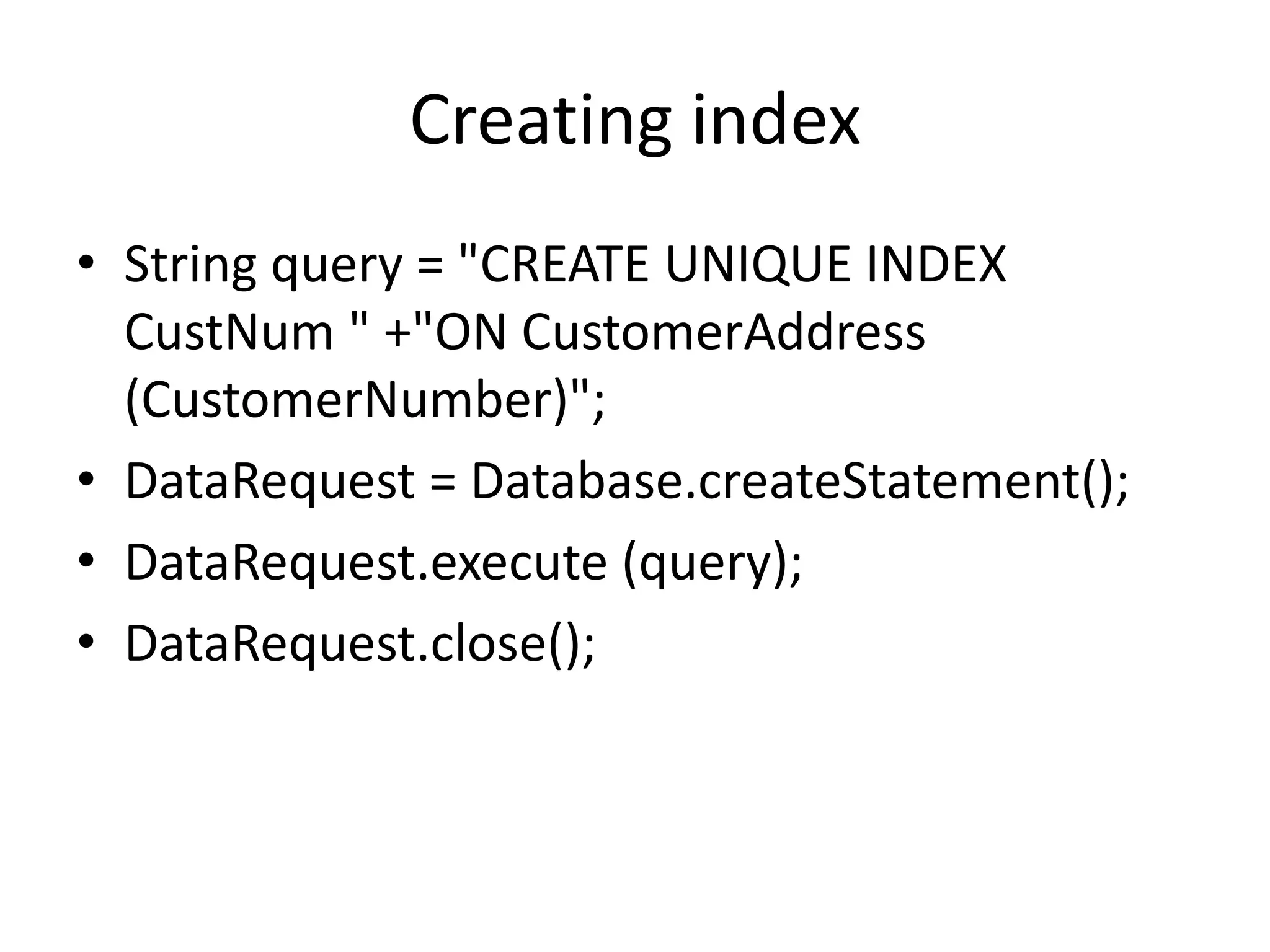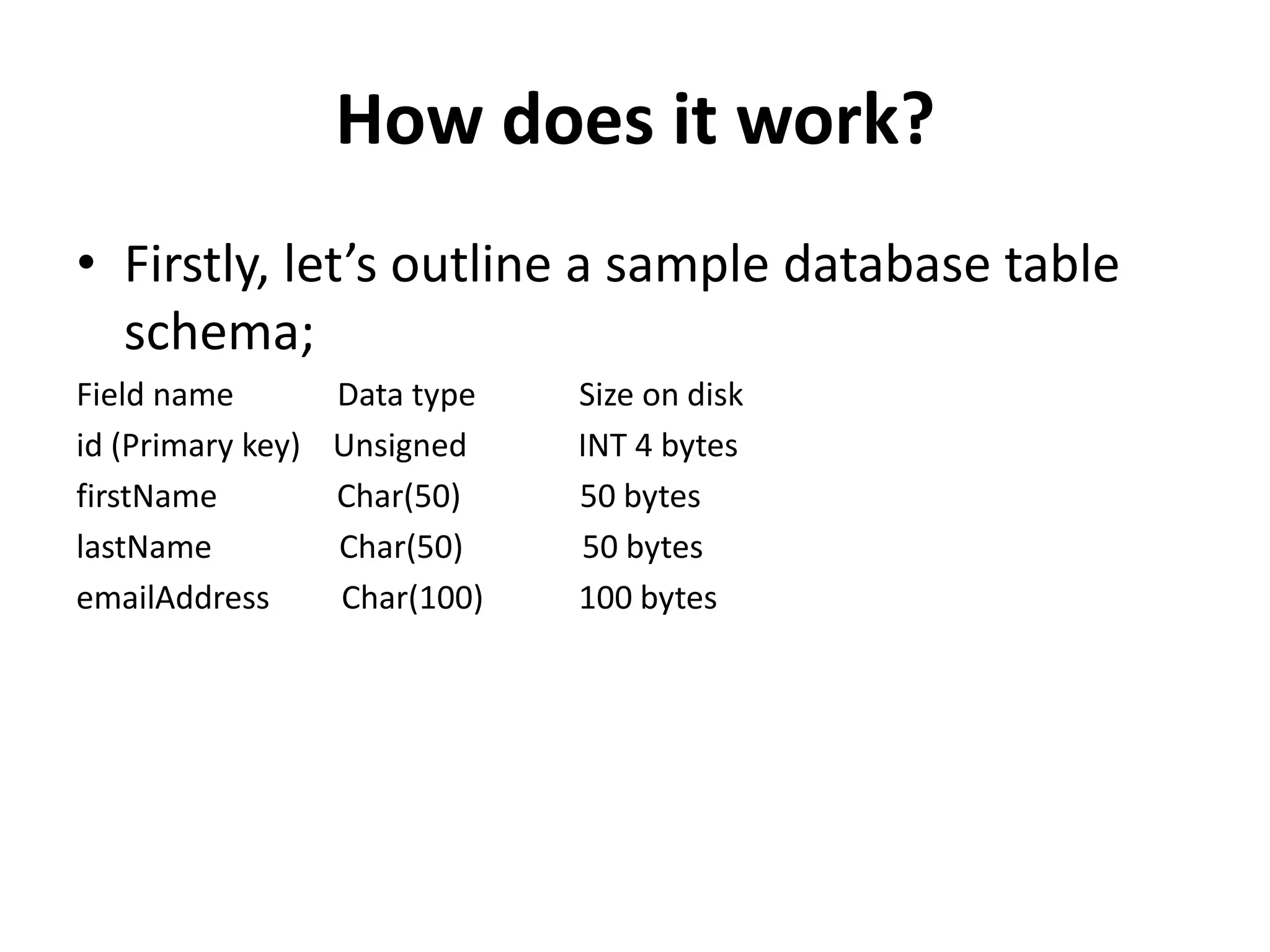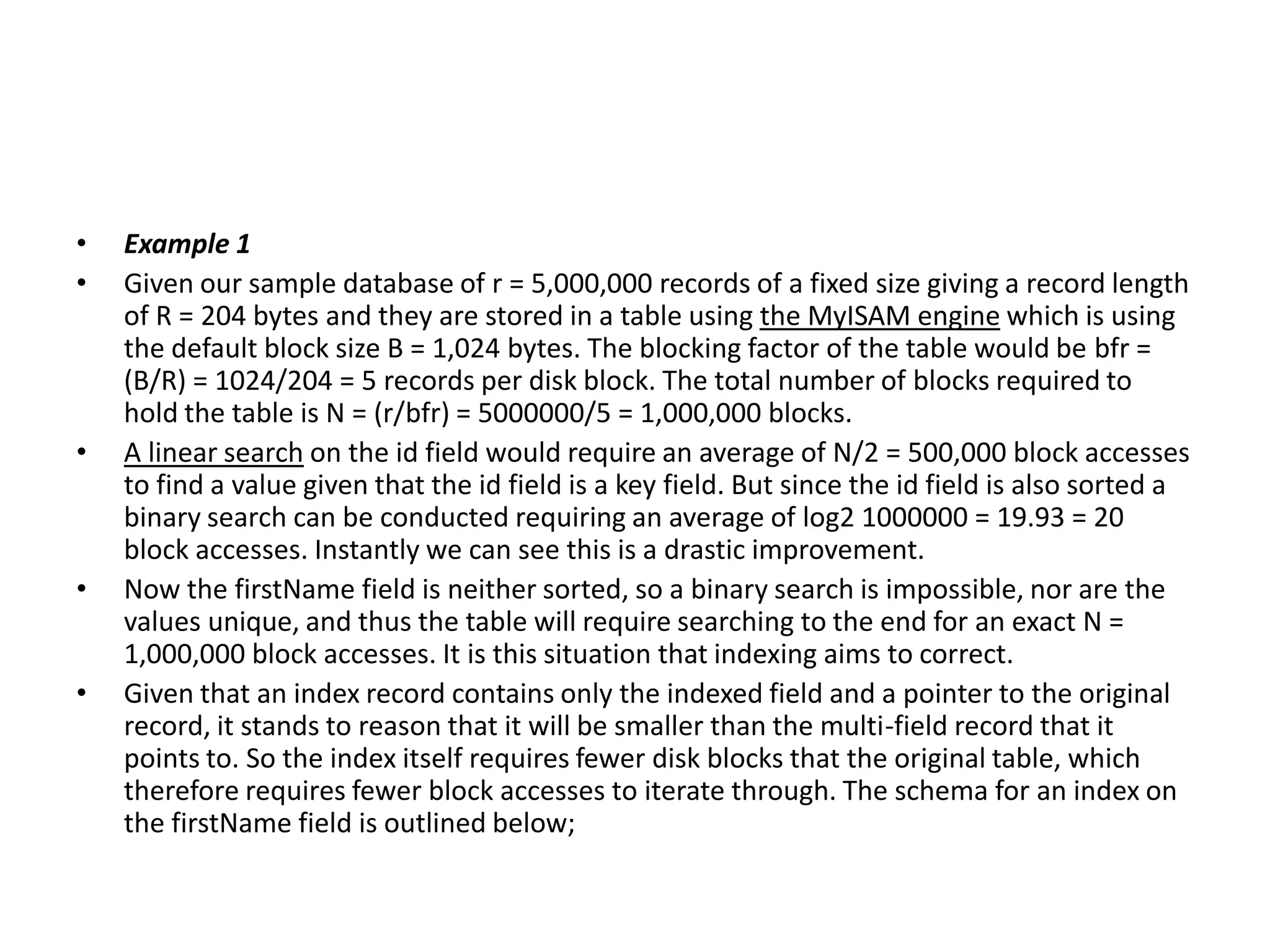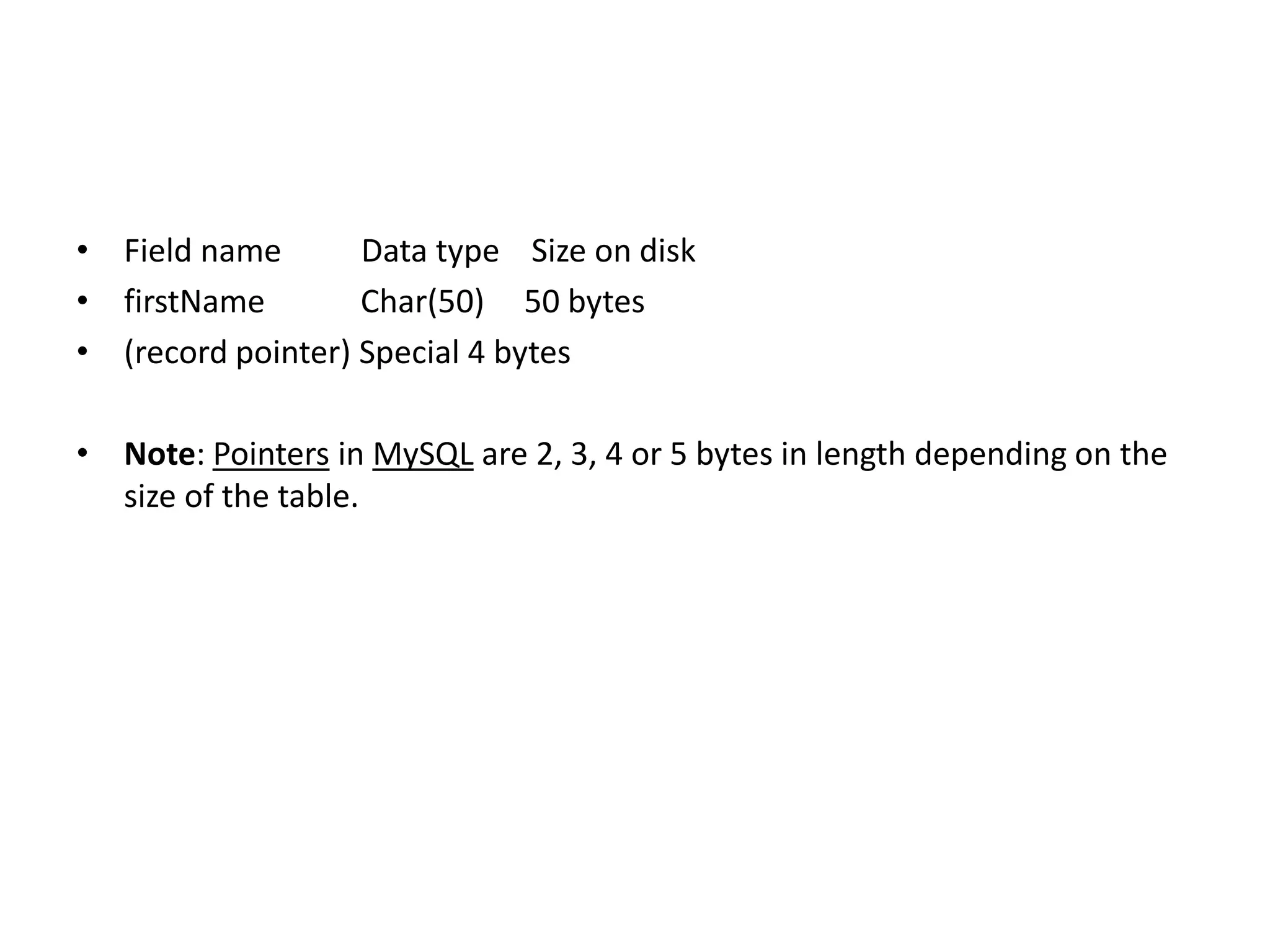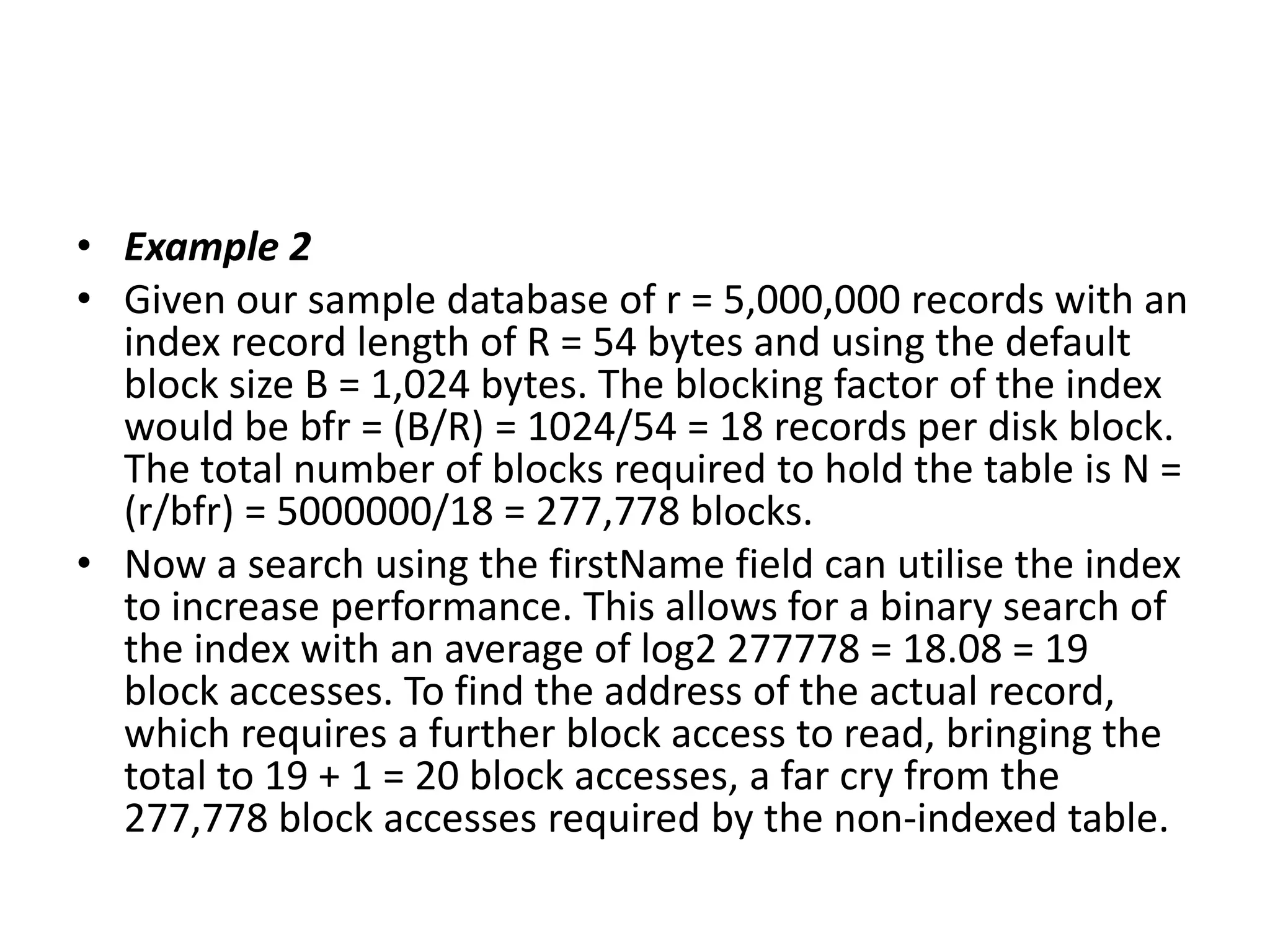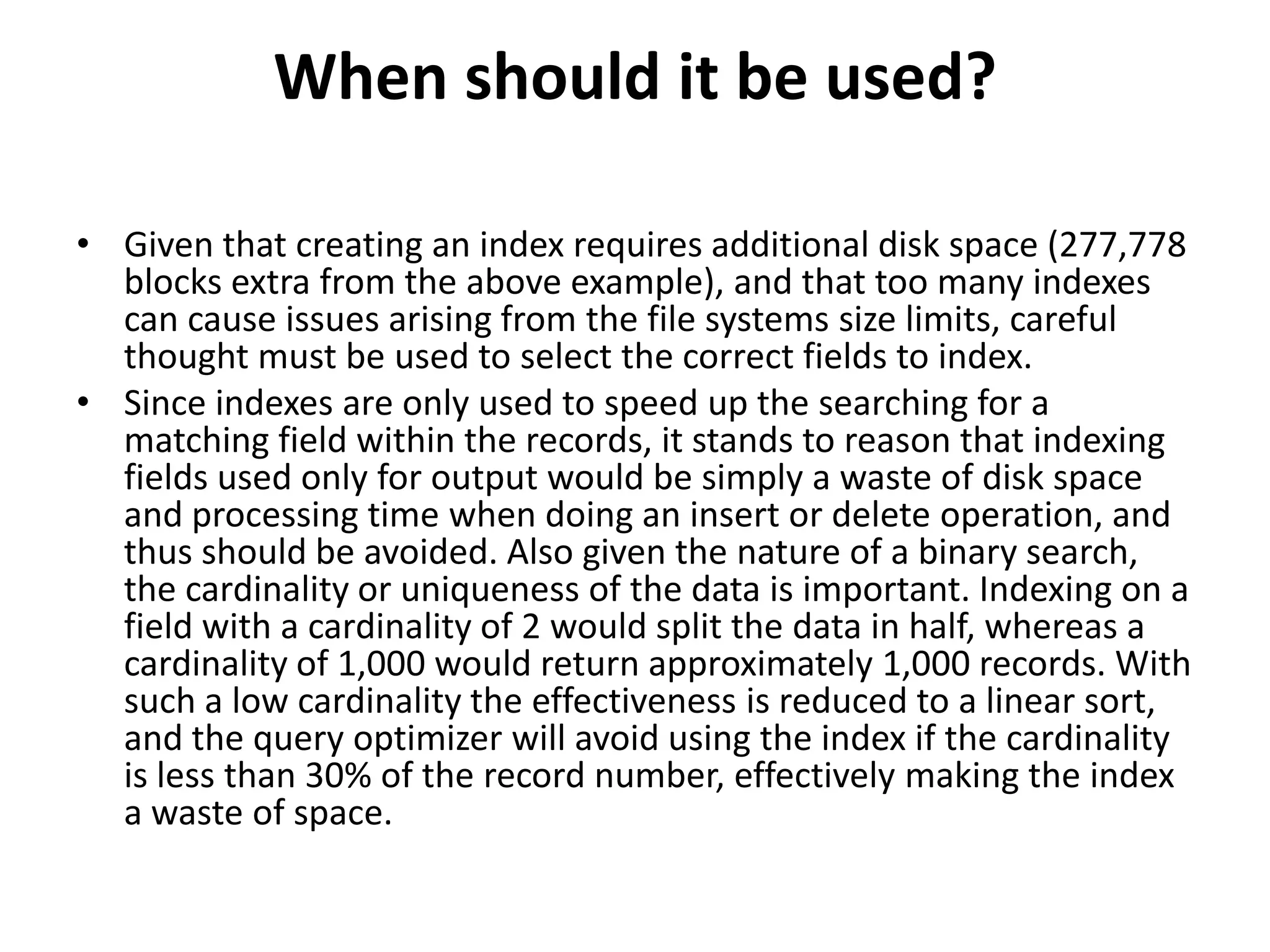Indexes are data structures that improve the speed of data retrieval from a database table by organizing records to allow for faster searches. They work by sorting records on indexed fields and storing field values and pointers to records, allowing for binary searches rather than linear searches through the entire table. While indexes improve search performance, they require additional storage and slower writes. Indexes should be created on fields commonly used for searching that have high cardinality (uniqueness) to maximize performance gains from their use.
